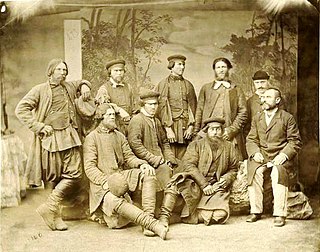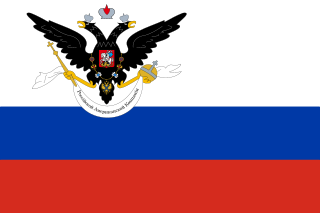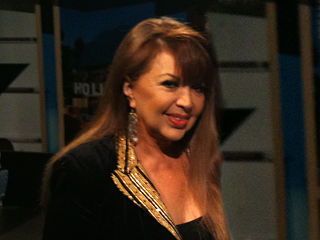
The Molokans are a Spiritual Christian sect that evolved from Eastern Orthodoxy in the East Slavic lands. Their traditions—especially dairy consumption during Christian fasts—did not conform to those of the Russian Orthodox Church, and they were regarded as heretics (sektanty). The term Molokan is an exonym used by their Orthodox neighbors; they tend to identify themselves as Spiritual Christians.

The Russian colonization of North America covers the period from 1732 to 1867, when the Russian Empire laid claim to northern Pacific Coast territories in the Americas. Russian colonial possessions in the Americas are collectively known as Russian America. Russian expansion eastward began in 1552, and in 1639 Russian explorers reached the Pacific Ocean. In 1725, Emperor Peter the Great ordered navigator Vitus Bering to explore the North Pacific for potential colonization. The Russians were primarily interested in the abundance of fur-bearing mammals on Alaska's coast, as stocks had been depleted by overhunting in Siberia. Bering's first voyage was foiled by thick fog and ice, but in 1741 a second voyage by Bering and Aleksei Chirikov made sight of the North American mainland.

Vitus Jonassen Bering, also known as Ivan Ivanovich Bering, was a Danish cartographer and explorer in Russian service, and an officer in the Russian Navy. He is known as a leader of two Russian expeditions, namely the First Kamchatka Expedition and the Great Northern Expedition, exploring the north-eastern coast of the Asian continent and from there the western coast on the North American continent. The Bering Strait, the Bering Sea, Bering Island, the Bering Glacier, and Vitus Lake were all named in his honor.

Bodega Bay is a village and census-designated place (CDP) in Sonoma County, California, United States. The population was 912 at the 2020 census. The town, located along State Route 1, is on the eastern side of Bodega Harbor, an inlet of Bodega Bay on the Pacific coast.

Bodega Bay is a shallow, rocky inlet of the Pacific Ocean on the coast of northern California in the United States. It is approximately 5 mi (8 km) across and is located approximately 40 mi (60 km) northwest of San Francisco and 20 mi (32 km) west of Santa Rosa. The bay straddles the boundary between Sonoma County to the north and Marin County to the south. The bay is a marine habitat used for navigation, recreation, and commercial and sport fishing.

Fort Ross, originally Fortress Ross, is a former Russian establishment on the west coast of North America in what is now Sonoma County, California. It was the hub of the southernmost Russian settlements in North America from 1812 to 1841. Notably, it was the first multi-ethnic community in northern California, with a combination of Native Californians, Native Alaskans, and Russians. It has been the subject of archaeological investigation and is a California Historical Landmark, a National Historic Landmark, and on the National Register of Historic Places. It is part of California's Fort Ross State Historic Park.

The Russian-American Company Under the High Patronage of His Imperial Majesty was a state-sponsored chartered company formed largely on the basis of the United American Company. Emperor Paul I of Russia chartered the company in the Ukase of 1799. It had the mission of establishing new settlements in Russian America, conducting trade with natives, and carrying out an expanded colonization program.
The history of the Jews in Latin America began with conversos who joined the Spanish and Portuguese expeditions to the continents. The Alhambra Decree of 1492 led to the mass conversion of Spain's Jews to Catholicism and the expulsion of those who refused to do so. However, the vast majority of Conversos never made it to the New World and remained in Spain slowly assimilating to the dominant Catholic culture. This was due to the requirement by Spain's Blood Statutes to provide written documentation of Old Christian lineage to travel to the New World. However, the first Jews came with the first expedition of Christopher Columbus, including Rodrigo de Triana and Luis De Torres.

The Valle de Guadalupe is an area of Ensenada Municipality, Baja California, Mexico that is an increasingly popular tourist destination for wine and Baja Med cuisine. It is located 20 kilometres (12 mi) north of the City of Ensenada and 113 kilometres (70 mi) southeast of the border crossing from San Diego to Tijuana. It includes communities such as Ejido El Porvenir, Francisco Zarco, San Antonio de las Minas and Colonia Articulo 115, and combined had 5,859 inhabitants according to the 2010 census.
Katz is a common German and Ashkenazi surname.

Russian Americans are Americans of full or partial Russian ancestry. The term can apply to recent Russian immigrants to the United States, as well as to those who settled in the 19th century Russian possessions in northwestern America. Russian Americans comprise the largest Eastern European and East Slavic population in the U.S., the second-largest Slavic population generally, the nineteenth-largest ancestry group overall, and the eleventh-largest from Europe.
Gloria Katz was an American screenwriter and film producer, best known for her association with George Lucas. Along with her husband Willard Huyck, Katz created the screenplays of films including American Graffiti, Indiana Jones and the Temple of Doom and Howard the Duck. Katz was of Jewish descent.

Olga Breeskin Torres is a Mexican violinist, dancer and actress. She was one of the most famous Mexican vedettes in 1970s and 1980s. Since her conversion to Christianity, she has only presented herself as a violinist.

The history of the Jews in Mexico can be said to have begun in 1519 with the arrival of Conversos, often called Marranos or “Crypto-Jews,” referring to those Jews forcibly converted to Catholicism and that then became subject to the Spanish Inquisition.

Before the 1849 California Gold Rush, American, English and Russian fur hunters were drawn to Spanish California in a California Fur Rush, to exploit its enormous fur resources. Before 1825, these Europeans were drawn to the northern and central California coast to harvest prodigious quantities of southern sea otter and fur seals, and then to the San Francisco Bay Area and Sacramento – San Joaquin River Delta to harvest beaver, river otter, marten, fisher, mink, gray fox, weasel, and harbor seal. It was California's early fur trade, more than any other single factor, that opened up the West, and the San Francisco Bay Area in particular, to world trade.

There is a Polish diaspora in Mexico. According to the 2005 intercensal estimate, there were 971 Polish citizens living in Mexico. Furthermore, by the estimate of the Jewish community, there may be as many as 15,000 descendants of Jewish migrants from Poland living in Mexico.

Russian Valley Hot Springs, also known as Valle de Guadalupe Hot Springs is a group of hot mineral springs near a historic Russian settlement in the Guadalupe Valley of Baja California, Mexico.













